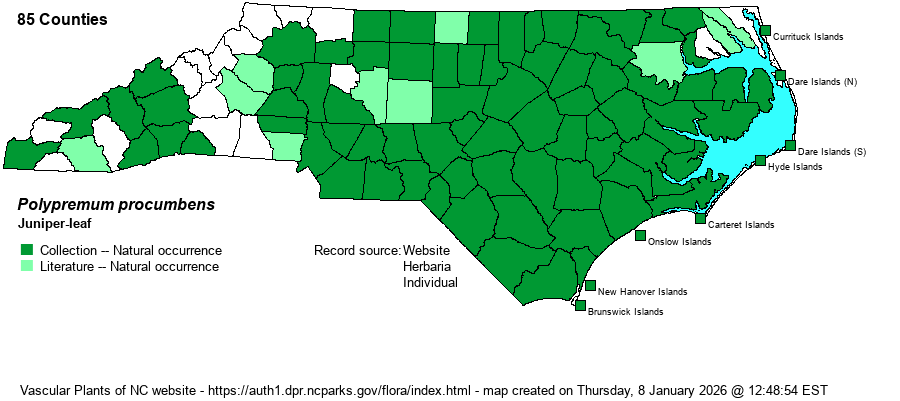| Author | L. | |
| Distribution | Throughout the Coastal Plain, and the eastern and central Piedmont; scattered in the western third of the state, and seemingly absent from the northern Mountains and northern foothills.
This is a widespread Southern species, found in nearly all counties from southern NJ to southern MO, and south to southern FL and central TX. It is mostly absent from the Appalachians north of southwestern NC. | |
| Abundance | Common and widespread over nearly all of the Coastal Plain and the eastern Piedmont, though scarce in the far northeastern counties. Fairly common in the central Piedmont, but infrequent in the southern Mountains and western Piedmont. Apparently absent in the northwestern corner of the state. | |
| Habitat | This is a native species of dry, usually sandy soil, in many settings. It is rather ruderal, growing in fields, roadsides, yards, edges of open woods, dune flats, and other similar sites with little competition. |
| Phenology | Blooms from late May to September, and fruits from August to October. | |
| Identification | This is a quite small plant, branched from the base and above, but reaching only about 6 inches high. It has very narrow, opposite leaves, each only about 2/3-inch long and needle-like. The numerous flowers are in terminal cymes, scattered over the top half of the plant, with 4 white petals, each rounded to squared at the apex and about 1/4-inch across. When not in bloom, it is easy to overlook, as the plant is wiry with little leaf surface area, but the numerous 4-petaled white flowers are somewhat conspicuous, if you are paying attention to plants growing around your shoes! | |
| Taxonomic Comments | Of uncertain affinities, this plant, the only member of its genus, has been bounced around in several families over the decades.
| |
| Other Common Name(s) | Polypremum, Rustweed | |
| State Rank | S5 | |
| Global Rank | G5 | |
| State Status | | |
| US Status | | |
| USACE-agcp | FACU link |
| USACE-emp | UPL link |

